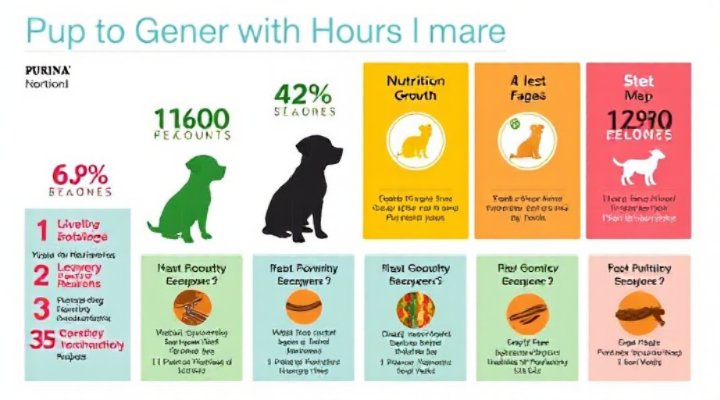When it comes to raising a happy, healthy puppy, nutrition plays a crucial role. Purina Dog Food for Puppies offers specialized formulas designed to meet the unique nutritional needs of growing dogs. In this comprehensive guide, we’ll explore everything you need to know about providing optimal nutrition for your furry friend.

Understanding Puppy Nutritional Needs
Puppies grow at an astonishing rate, which means their nutritional requirements are quite different from adult dogs. According to the American Veterinary Medical Association, puppies need about twice as many calories per pound of body weight as adult dogs. Purina puppy food formulas are specifically designed to provide this extra energy along with essential nutrients.
For example, protein is crucial for muscle development, while DHA supports brain and vision development. That’s why Purina includes high-quality protein sources and essential fatty acids in their puppy formulas. If you’re considering other options, you might find our guide to best dog food brands helpful for comparison.

Choosing the Right Purina Formula for Your Puppy
Purina offers several puppy food lines, each tailored to different needs. The Purina Pro Plan Puppy formulas, for instance, are particularly popular among breeders and veterinarians. These formulas contain live probiotics for digestive health and optimal protein levels for lean muscle development.
For small breed puppies, Purina offers specially sized kibble that’s easier for tiny mouths to chew. Meanwhile, large breed formulas help control growth rate to support proper joint development. Our article on Purina Pro Plan puppy food benefits dives deeper into these specialized formulas.

Transitioning to Purina Puppy Food
When switching your puppy to Purina food, it’s important to do so gradually over 7-10 days. Start by mixing 25% new food with 75% current food, then slowly adjust the ratios. This gradual transition helps prevent digestive upset.
Remember, puppies typically need to eat three to four times a day. As your puppy grows, you can reduce feeding frequency while increasing portion sizes. The FDA’s pet feeding guidelines provide excellent recommendations for portion control.

Common Questions About Purina Puppy Food
Many new puppy owners wonder about the difference between Purina Puppy Chow and Purina Pro Plan. While both provide complete nutrition, Pro Plan offers more specialized formulas with higher quality ingredients. It’s similar to comparing Pedigree puppy food with premium options.
Another common question is about feeding schedules. Most veterinarians recommend free-feeding (leaving food available at all times) for very young puppies, then transitioning to scheduled meals as they grow older.

Supporting Your Puppy’s Development
Proper nutrition is just one part of raising a healthy puppy. Combine Purina puppy food with appropriate beginner dog training and regular veterinary check-ups for best results. Remember, every puppy is unique, so don’t hesitate to consult your vet about your specific pup’s needs.
In conclusion, Purina Dog Food for Puppies provides scientifically formulated nutrition to support your puppy’s growth and development. By choosing the right formula and following proper feeding guidelines, you’re giving your furry friend the best possible start in life.
Related Keywords: Purina puppy food reviews, best puppy food 2023, Purina Pro Plan vs Royal Canin, how much to feed a puppy, puppy feeding schedule, Purina puppy food ingredients
